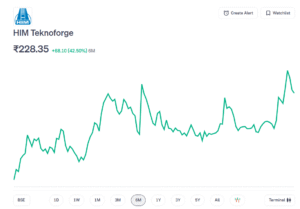How to Budget Money on Low Income PDF: 6 Tips – Discover practical strategies to manage your finances effectively, even on a tight budget. Download your free PDF guide now! Learn smart budgeting techniques for low income.
Budgeting can however at times be a very challenging experience especially if you are earning little income. Still, finding all that you’re looking for doesn’t have to be expensive if only you know how to go about it, and all your needs will be met.
In this article, I’ll share 6 practical tips on how to budget money on low income with pdf that you can easily implement.
By the end of this read, you’ll be better equipped to take control of your financial situation and can even download a handy how to budget money on low income pdf guide to keep these tips at your fingertips
1. Track Every Dollar
The first part when learning how to budget money on a low income is to keep a record of every dollar that is spent. If you have to keep track of several recurring small expenses, it becomes very difficult to keep tabs on where the money is going.
The first step is to compile a list of all your expenditures for at least, a month. This practice will enable one to know his or her spending habits and be able to come up with measures to curb the expenditure.
It’s recommended to keep a paper journal or use an application or a spreadsheet with columns to write all the acquisitions made.
Don’t be tempted to leave out minor expenditures such as your coffee, fuel, or rent. It will give you an idea of your spending behavior and enable you to know which areas you can cut on your spending.
2. Prioritize Essential Expenses
Employing a low income-means that one needs to ensure that he or she pays for the necessary expenses. These are such things as house rent or bond, bills such as lighting, water, space, and refrigerator, food expenses, and fares among others.
After you have met these, you would direct the rest of the money on items that you want such as savings, paying off your debts and even enjoying a night out.
Not the list of your needs, but the list of bare necessities should be created, and then it has to be ranked by priorities. This will assist you in avoiding diverting your attention towards items that you do not need to purchase since it will enable you to realize the importance of money.
3. Embrace the 50/30/20 Rule
The 50/30/20 budgeting rule is a simple yet effective way to manage your finances. Under this rule, you allocate:
- 50% of your income to necessities (like rent, utilities, groceries)
- 30% to discretionary spending (like dining out, entertainment)
- 20% to savings and debt repayment
While this rule is traditionally applied to average or higher incomes, it can still be useful for those on a low income.
If the percentages don’t fit your situation perfectly, don’t worry. The key is to adapt the rule to your needs, possibly adjusting the proportions while maintaining the overall structure.
4. Cut Down on Unnecessary Expenses
Especially, if you think it is possible to waste money on things that are not needed, then your financial condition will be tight. Try and review your expenditure for the month and find a way to draw it down in various aspects.
This might entail cutting back on eating out, eliminating unnecessary memberships and deals that aren’t used, or buying cheaper products in the usual purchase.
Small changes mean big gains in the long run and give you the much-needed leeway to cater to critical aspects such as saving or paying off bills.
5. Automate Your Savings
Sometimes you will only be able to save a few dollars, but it is important that you can regularly set aside something from your small income.
One way of achieving this is simple – automate your savings. Pay yourself first by creating a standing order from your checkbook to a savings account on payday. It helps one save money regularly without the aspect of spending it.
Beginning with $10 a week is also a great idea even if one is starting from scratch. This way, it will develop a sort of saving that would enable you to meet any form of expense that may come along without having to borrow.
6. Take Advantage of Financial Assistance Programs
If your income is particularly low, don’t hesitate to explore financial assistance programs available in your area. Many governments and non-profit organizations offer help with food, housing, utilities, and more.
These programs (how to budget money on low income pdf) can provide temporary relief, allowing you to stabilize your financial situation while you work on improving your income.
Look for local resources and community programs that offer support. Whether it’s through food banks, housing assistance, or utility discounts, these programs can significantly ease your financial burden.
Bottom Line
Budgeting on a low income requires diligence, discipline, and a bit of creativity. By tracking your spending, prioritizing essential expenses, embracing budgeting rules like the 50/30/20 rule, cutting unnecessary costs, automating your savings, and seeking out financial assistance, you can take control of your finances and reduce stress.
To make it easier for you, I’ve compiled these tips into a handy PDF guide that you can download and refer to whenever you need a reminder on how to budget effectively.
Join our newsletter for regular and weekly updates on health tips from around the world. Get the latest insights delivered straight to your inbox by subscribing here.
Check out the Amazon products we love to use: Click here to explore.
Follow Honest Adviser on social media for more tips and advice on financial planning and budgeting: Facebook, Instagram, YouTube, and Threads. Username: @honestadviser.



